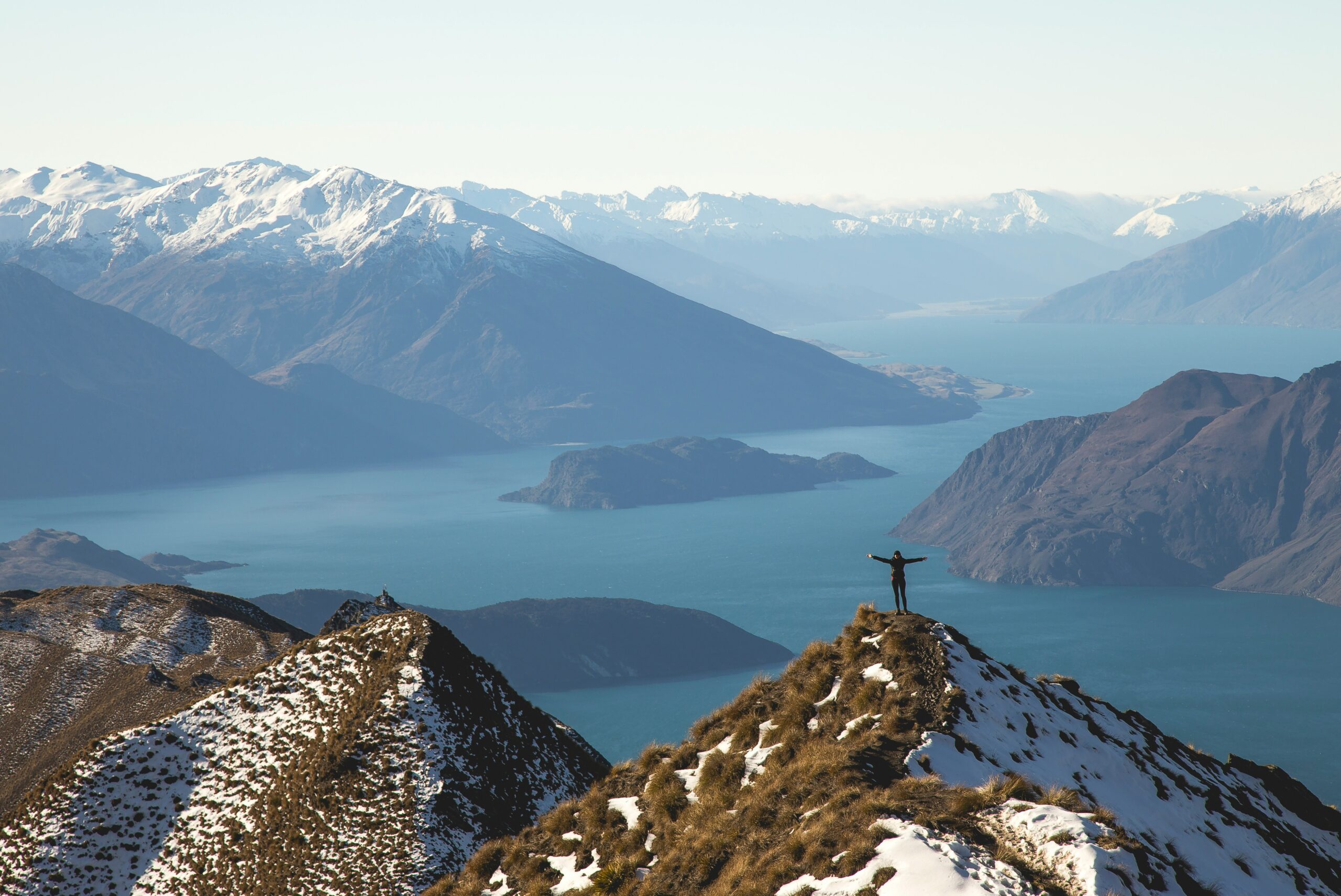Climbing Island Peak, a prominent peak in the Everest region of Nepal, involves a range of technical challenges that require climbers to be well-prepared and skilled. Standing at 6,189 meters, Island Peak offers a demanding ascent with a variety of terrains, each requiring specific technical skills and equipment. Understanding these aspects is crucial for a safe and successful climb.
Route and Terrain
The climb begins with a trek from Lukla to Island Peak Base Camp, passing through lush forests and traditional Sherpa villages. Once at Base Camp, climbers must tackle several technical sections. The ascent typically involves a combination of glacier travel, steep snow slopes, and icy rock faces. The final push to the summit is particularly challenging, with a mix of snow and ice climbing that requires precise technique and equipment.
Technical Skills
One of the key technical aspects of climbing Island Peak is mastering the use of crampons and ice axes. Climbers need to efficiently use crampons to gain traction on icy slopes and glaciers. Ice axes are used for balance and self-arresting in case of a fall. Proficiency in these tools is essential for safely navigating the peak’s steep and icy sections. Additionally, climbers must be adept at rope techniques, including setting anchors, belaying, and managing ropes across crevasses and ice walls.
Climbing Gear
Proper gear is critical for the technical challenges of Island Peak. Essential equipment includes a harness, helmet, crampons, an ice axe, and technical climbing boots. A high-altitude tent, four-season sleeping bag, and layering systems for clothing are also necessary to handle the extreme weather conditions. Climbers should be familiar with the use of this gear and ensure it is well-maintained and appropriately fitted.
Acclimatization and Physical Conditioning
Technical climbing on Island Peak requires excellent physical conditioning and acclimatization to high altitudes. Climbers should engage in rigorous training, including cardiovascular and strength exercises, to build endurance and strength. Acclimatization involves gradually ascending to higher altitudes to allow the body to adjust to decreased oxygen levels, reducing the risk of altitude sickness and improving overall climbing performance.
Weather and Safety
Weather conditions on Island Peak can be unpredictable, with rapid changes that affect climbing safety. Climbers need to be prepared for cold temperatures, high winds, and potential snowstorms. Understanding weather patterns and being prepared to adjust plans based on weather forecasts is crucial for safety.
In summary, climbing Island Peak involves navigating a variety of technical challenges, from glacier travel and ice climbing to managing climbing gear and acclimatizing to high altitudes. Mastery of these technical aspects is essential for a successful and safe ascent, making thorough preparation and training indispensable for anyone undertaking this formidable climb.
Introduction to the Technical Challenges of Island Peak
Climbing Island Peak presents a variety of technical challenges that demand both skill and preparation. Situated at 6,189 meters, the peak’s ascent requires navigating complex terrain, including glaciers, ice walls, and steep snow slopes. Climbers face the dual challenge of high-altitude conditions and technical climbing, which requires proficiency in both physical endurance and specialized climbing techniques. The climb involves several key technical aspects, such as using crampons and ice axes effectively, managing ropes, and handling unpredictable weather conditions. Understanding these challenges is crucial for ensuring safety and success. Proper training and preparation are essential to meet these demands, as the climb to Island Peak not only tests physical strength but also requires a high level of technical skill and mental resilience.
Understanding the Terrain and Elevation Gains of the Climb
The terrain and elevation gains of Island Peak significantly influence the climb’s technical demands. The journey begins with a trek through the Khumbu Valley to Base Camp, transitioning from lush lower altitudes to the harsh conditions of high-altitude environments. From Base Camp, climbers encounter diverse terrain, including rocky paths, glacial ice, and steep snow slopes. The final ascent involves a sharp climb up a snow and ice face, leading to the summit. Elevation gains are substantial, with climbers ascending from around 5,000 meters at Base Camp to the summit at 6,189 meters. This rapid elevation gain necessitates effective acclimatization to prevent altitude sickness. Understanding these terrain features and elevation changes helps climbers prepare for the physical and technical demands of the climb.
Evaluating the Difficulty Rating and Technical Grade of Island Peak
Island Peak is classified as a technical climb, with a difficulty rating that reflects its challenges. The peak is graded as a PD+ (Peu Difficile Plus) on the French Alpine Scale, indicating that it requires basic climbing skills and involves moderate technical difficulties. The climb involves traversing glaciers, negotiating crevasses, and climbing steep ice and snow slopes, which requires proficiency in using crampons, ice axes, and ropes. The ascent also involves sections of mixed terrain that demand careful technique and sound judgment. Understanding the difficulty rating and technical grade is crucial for climbers to gauge their readiness and ensure they have the necessary skills and experience to tackle the challenges of Island Peak safely.
Essential Mountaineering Skills Required for Island Peak Climbing
Island Peak Expedition requires a range of essential mountaineering skills. Key skills include proficiency in using crampons and ice axes for traction and balance on icy and snowy surfaces. Climbers must also be adept at managing ropes, including techniques for belaying, rappelling, and crossing crevasses. Knowledge of glacier travel, including crevasse rescue techniques, is vital for navigating the glacier sections of the climb. Physical conditioning, such as strength and endurance training, is necessary to handle the demands of high-altitude climbing. Additionally, climbers should be able to manage their pace and energy levels to cope with the physical stress of the ascent. Mastery of these skills ensures a safer and more effective climb of Island Peak.
Mastering Proper Rope and Harness Techniques for Glacier Travel
Mastering rope and harness techniques is crucial for safe glacier travel on Island Peak. Climbers must be skilled in using a harness to secure themselves and their gear, ensuring safety while traversing glaciers and climbing steep sections. Proper use of ropes involves techniques such as setting up anchors, belaying, and creating safety systems for crevasse crossings. Knowledge of crevasse rescue techniques, including self-rescue and partner rescue, is essential for handling emergencies on the glacier. Climbers should practice these techniques in training scenarios to ensure proficiency during the actual climb. Mastering these skills helps manage the risks associated with glacier travel, ensuring a safer and more successful ascent of Island Peak.
Navigating the Khumbu Icefall and Crevasse-Ridden Glacier
Navigating the Khumbu Icefall and crevasse-ridden glacier is one of the most technically demanding aspects of climbing Island Peak. The Khumbu Icefall, situated at the base of Everest, presents a maze of towering ice seracs, deep crevasses, and unstable ice formations. Climbers must traverse these obstacles with extreme caution, using fixed ropes and ladders placed by previous expeditions to aid in crossing dangerous sections. The icefall requires careful route finding and precise movement to avoid potential hazards. Similarly, the glacier sections leading up to Island Peak are riddled with crevasses that necessitate the use of rope techniques and crevasse rescue skills. Proper glacier travel techniques, including roping up with partners and regularly checking for hidden crevasses, are crucial for safety. Navigating these challenging ice and glacier terrains requires a combination of technical skill, experience, and careful attention to changing conditions to ensure a safe and successful climb.
Techniques for Ascending and Descending Steep Snow and Ice Slopes
Ascending and descending steep snow and ice slopes on Island Peak demand specific climbing techniques and careful preparation. For ascending, climbers use a combination of front-pointing with crampons and swinging ice axes into the snow or ice for stability and balance. Proper technique involves placing each step with precision, using the ice axe for support, and maintaining a steady rhythm to conserve energy. When descending, climbers use a combination of self-arrest techniques with their ice axe and controlled glissading to safely manage their descent. The use of ropes for safety and controlled lowering or rappelling is essential for both ascending and descending technical sections. Training in these techniques, including practicing self-arrest and proper use of equipment, is critical for handling steep snow and ice slopes effectively and safely during the climb.
Use of Crampons, Ice Axes, and Other Technical Climbing Equipment
The use of crampons, ice axes, and other technical climbing equipment is fundamental to climbing Island Peak. Crampons, which are spiked devices attached to climbing boots, provide the necessary traction on ice and snow, enabling climbers to maintain stability and prevent slipping. Ice axes serve multiple purposes: they are used for balance, self-arrest in case of a fall, and to cut steps into hard snow or ice. Other essential equipment includes a harness, ropes, and carabiners for safety and climbing efficiency. Proper use of this gear involves techniques such as placing crampons securely, using the ice axe effectively for both support and self-arrest, and managing rope systems for protection and crevasse crossings. Understanding how to properly use and maintain this equipment ensures climbers are well-prepared to handle the technical challenges of the Island Peak ascent.
Importance of Proper Footwear and Layering for Changing Conditions
Proper footwear and layering are critical for managing the changing conditions encountered on Island Peak. Climbing boots must be sturdy, insulated, and compatible with crampons to provide support and traction on ice and snow. Well-fitted boots reduce the risk of blisters and frostbite, ensuring comfort and safety during the climb. Layering clothing is equally important to handle the variable temperatures and weather conditions experienced at high altitudes. Climbers should use a base layer for moisture wicking, an insulating mid-layer for warmth, and a waterproof outer layer to protect against wind and precipitation. This layering system allows climbers to adjust their clothing as conditions change, maintaining comfort and preventing overheating or excessive cooling. Proper footwear and effective layering strategies are essential for adapting to the dynamic environment of Island Peak and ensuring a successful and comfortable climb.
Climbing Strategies for the Final Summit Push on Island Peak
The final summit Island Peak requires strategic planning and execution to handle the peak’s technical challenges and high-altitude conditions. Key strategies include acclimatization, pacing, and timing. Climbers should aim to acclimatize adequately before the summit push to mitigate altitude sickness and improve performance. On the day of the summit, maintaining a steady, manageable pace is crucial to conserve energy and avoid exhaustion. Early departure is often recommended to take advantage of stable weather conditions and to ensure sufficient time for the ascent and descent. Proper use of climbing techniques, such as efficient ice axe and crampon use, is essential for navigating the final steep sections. Additionally, climbers should be prepared for changing weather and be willing to turn back if conditions become unsafe. Strategic planning and adherence to these climbing strategies help ensure a safe and successful summit push on Island Peak.
Transitioning from Trekking to Technical Mountaineering Techniques
Transitioning from trekking to technical mountaineering techniques involves significant changes in skills and mindset. While trekking focuses on endurance and navigating trails, technical mountaineering requires mastering specialized skills for climbing ice, snow, and rock. Key techniques include the use of crampons and ice axes for traction and balance on icy surfaces, as well as rope skills for safety and efficiency. This transition demands extensive training to build proficiency in climbing techniques, such as step cutting and self-arrest. Additionally, climbers need to adapt to high-altitude conditions and manage the physical and psychological stresses associated with technical climbs. Practice in simulated environments and progressively challenging climbs help bridge the gap between trekking and technical mountaineering, ensuring climbers are prepared for the complexities of Island Peak.
Rope Management and Belaying Considerations on the Mountain
Rope management and belaying are critical components of technical climbing on Island Peak, where safety and efficiency are paramount. Proper rope management involves techniques for coiling, carrying, and deploying the rope to avoid tangles and ensure quick access when needed. Belaying requires the use of appropriate techniques to protect climbers as they ascend or descend challenging sections. This includes understanding how to properly secure a climber using various belay devices and techniques for managing rope slack and tension. Effective belaying ensures that climbers are protected from falls and can navigate hazardous sections safely. It also involves communication and coordination with team members to execute maneuvers smoothly. Mastery of these skills is essential for safely managing the technical demands of Island Peak and ensuring a successful climb.
Dealing with Exposure and Hazardous Terrain on the Island Peak Route
Dealing with exposure and hazardous terrain on the Island Peak route is crucial for ensuring safety and success. The climb involves navigating treacherous sections, including steep ice and snow slopes, crevassed glaciers, and exposed ridges. Climbers must maintain focus and use proper techniques to handle these hazards effectively. For steep slopes, techniques such as front-pointing with crampons and using an ice axe for balance are essential. On crevassed terrain, rope systems and careful navigation are necessary to prevent falls into hidden crevasses. Exposure to high winds and extreme weather conditions further complicates the climb, requiring climbers to be prepared for sudden changes and to use protective gear. Effective risk management and cautious movement through these hazardous areas are vital for a safe and successful ascent.
Importance of Teamwork and Communication in Technical Climbing
Teamwork and communication are crucial in technical climbing on Island Peak. Climbing in a team requires coordinated efforts and clear communication to manage complex situations safely. Effective teamwork ensures that tasks are completed efficiently, such as setting up belays, crossing crevasses, and managing rope systems. Communication helps synchronize movements, relay important information, and address any issues promptly. This includes discussing climbing strategies, weather conditions, and individual needs. Mutual support and trust among team members enhance safety and morale, allowing for a smoother climbing experience. In challenging conditions, teamwork becomes even more critical, as climbers rely on each other for assistance, encouragement, and decision-making. Strong teamwork and clear communication are essential for navigating the technical and high-altitude challenges of Island Peak successfully.
Navigating the Ever-Changing Conditions on the Island Peak Glacier
Navigating the ever-changing conditions on the Island Peak Climbing glacier requires adaptability and careful attention. Glacial conditions can vary dramatically, with shifting ice formations, changing crevasse patterns, and fluctuating weather impacting the climbing route. Climbers must be prepared for sudden changes in visibility, temperature, and snow or ice conditions. This involves continuously assessing the stability of ice formations, making real-time adjustments to the climbing route, and using updated weather forecasts to plan movements. Employing techniques such as regular rope checks and keeping a keen eye on potential hazards helps manage the risks associated with these dynamic conditions. Flexibility and quick decision-making are essential for safely navigating the glacier and ensuring a successful ascent of Island Peak.
Adapting Climbing Techniques to Varying Snow and Ice Conditions
Adapting climbing techniques to varying snow and ice conditions is essential for a successful and safe ascent of Island Peak. Snow and ice conditions can change rapidly due to temperature fluctuations, weather patterns, and the time of day. For example, early morning snow might be hard and icy, requiring front-pointing techniques with crampons for better traction. In contrast, softer snow later in the day might necessitate a different approach, such as using snowshoes or adjusting your crampon technique to avoid post-holing. Ice conditions also vary; hard ice requires precise placements of crampons and ice axes, while softer ice might allow for more aggressive cutting techniques. Climbers must be able to quickly assess these conditions and adjust their techniques accordingly, including modifying their pace and movement strategies to maintain safety and efficiency. Mastery of these adaptive techniques helps mitigate the risks associated with variable snow and ice conditions, ensuring a more controlled and successful climb.
Emergency Procedures and Rescue Techniques on Technical Terrain
Emergency procedures and rescue techniques are critical when climbing technical terrain like Island Peak, where accidents can occur despite the best preparations. Key procedures include crevasse rescue techniques, which involve using ropes, harnesses, and other gear to perform self-rescue or partner-rescue operations. Climbers should be trained in creating anchors, using pulley systems, and executing efficient rescue maneuvers. Additionally, having a well-practiced plan for medical emergencies, such as administering first aid or managing altitude sickness, is crucial. Effective communication and coordination among team members are essential during emergencies to execute these procedures swiftly. Regular drills and scenario-based training help climbers remain proficient in these techniques, ensuring that they can respond effectively in high-stress situations and improve overall safety during the climb.
The Role of Sherpa Guides and Their Technical Expertise
Sherpa guides play a vital role in the success of climbing Island Peak, providing invaluable technical expertise and local knowledge. Their experience with the region’s unique terrain and weather conditions enhances safety and efficiency on the mountain. Sherpas are adept at route finding, managing technical sections, and ensuring that the climbing path is secure. They also assist with setting up fixed ropes, navigating crevasses, and providing critical support during challenging segments of the climb. Their guidance includes not only technical skills but also insights into acclimatization and coping with high-altitude conditions. The presence of experienced Sherpa guides ensures that climbers benefit from their extensive knowledge, improving overall chances of a safe and successful ascent. Building a strong, collaborative relationship with Sherpas can greatly enhance the climbing experience and address any issues that arise on the mountain.
Preparing for and Managing the Psychological Aspects of Technical Climbing
Preparing for and managing the psychological aspects of technical climbing is crucial for tackling the challenges of Island Peak. The climb involves significant mental stress due to the physical demands, high-altitude conditions, and potential dangers of technical terrain. Mental preparation includes developing strategies to cope with fear, anxiety, and fatigue. Techniques such as visualization, setting incremental goals, and maintaining a positive mindset can help climbers manage stress and stay focused. Building psychological resilience through simulated climbs and stress management training enhances the ability to handle high-pressure situations. Regular communication with team members and maintaining a supportive group dynamic also play a key role in managing psychological stress. Effective mental preparation and resilience are essential for navigating the mental challenges of technical climbing and ensuring a successful ascent.
Continuous Skill Development and Training for Future Technical Climbs
Continuous skill development and training are vital for preparing for future technical climbs, including challenging ascents like the Island Peak Expedition. Ongoing practice in essential climbing techniques, such as ice and rock climbing, glacier travel, and rope management, ensures that skills remain sharp and up-to-date. Participating in advanced mountaineering courses and training programs helps climbers stay informed about new techniques and equipment. Regular physical conditioning, including strength, endurance, and flexibility training, supports the physical demands of technical climbs. Additionally, engaging in regular climbing practice in various conditions and terrains helps build experience and adaptability. Continuous skill development and training not only enhance performance on technical climbs but also improve safety and confidence, preparing climbers for increasingly challenging future adventures.












